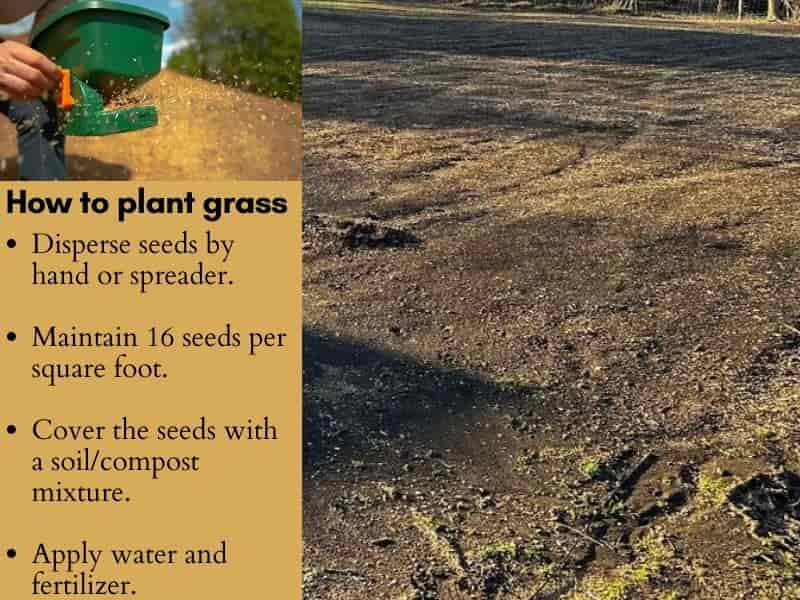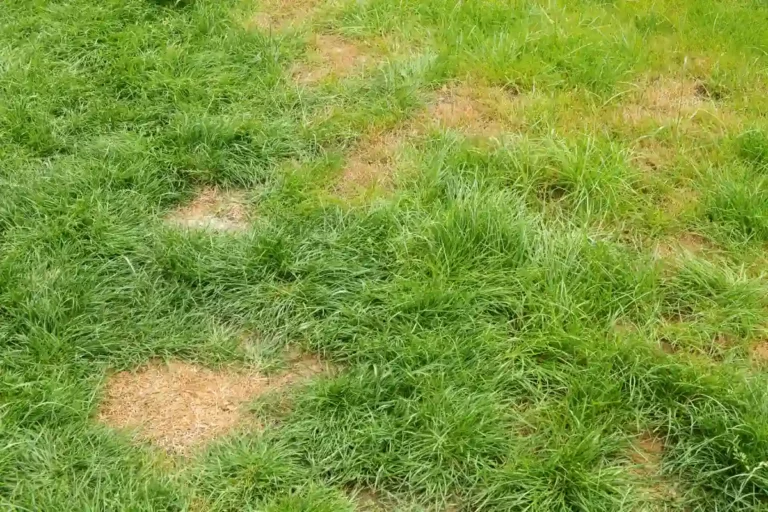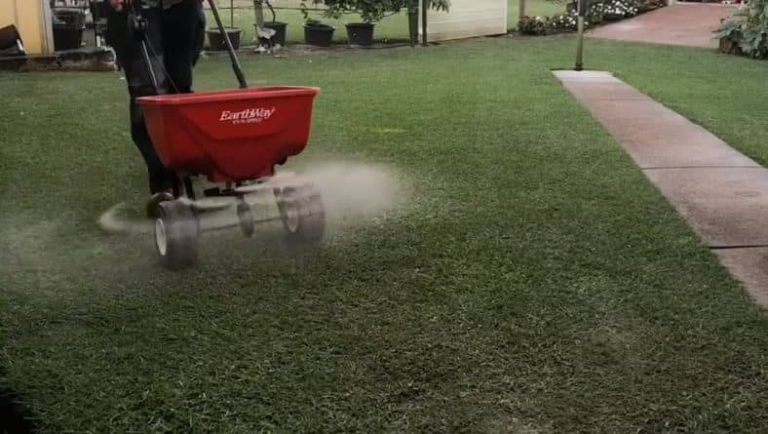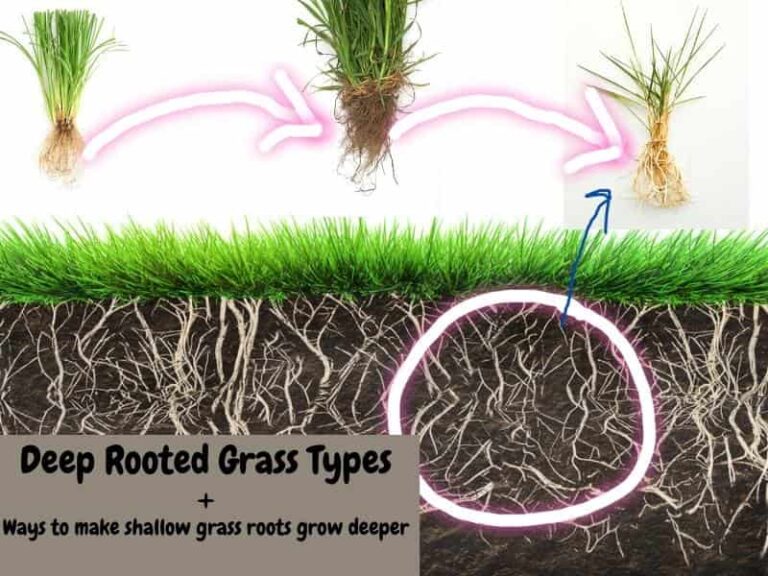When Is The Best Time To Plant Grass Seed
Knowing the best time to plant grass seed for successful lawn establishment is important. Planting grass seeds at the wrong time increases the chances of failure.
The best time to plant grass seed is in the spring for warm-season grasses and fall for cool-season grasses. Avoid planting grass seeds in the heat of the summer or in the chilly winter weather, as the extreme temperatures aren’t suitable for grass seed germination and seedling growth.
Contents:
Factors that determine the lawn seeding times
The factors that determine the lawn seeding times include:
- The grass type
- Region
- Weather

Grass type
The grass type is one of the main factors to consider when determining lawn seeding times. For example, cool-season grasses like fescue, Kentucky bluegrass, and perennial ryegrass are best planted early in the spring so that they have enough time to germinate before the hot-summer weather kicks in. They should also be planted early in the fall before the chilly winter weather checks in.
On the other hand, warm-season grasses like Bahia grass, Zoysia grass, and Bermuda grass should be planted in late spring-early summer (northern climates) or early spring-late fall (southern climates).
Region
Your region also determines your climate, consequently impacting the time when grass seeds should be planted. For instance, if you live in the south, where the climate is temperate throughout the year, it’s best to plant warm-season grasses from spring-late fall. Meanwhile, if you live in the midwest and the north, where temperatures dip below freezing from late fall-winter, it’s best to plant in late spring-early summer (warm-season grasses) or late summer-early fall (cool-season grasses).
Weather
Apart from the climate and temperature conditions, you should consider the weather when planting grass seeds. Light showers facilitate germination, whereas heavy downpours may wash away grass seeds. You should, therefore, avoid putting down grass seeds during thunderstorms.
Windy weather is also unsuitable for planting grass seeds, as the wind will spread the seeds across the yard. Finally, ensure the soil is sturdy and that there are no mud puddles. Planting grass seeds in muddy soil can cause disease.
When is the best time to plant grass seed?
What months are best to put grass seed down?
In general, warm-season turfgrasses are best planted in the spring from April-May, while cool-season turfgrasses are best planted in the fall from August-October. Avoid planting grass seed in the summer, as the grass will either be dormant or will require lots of irrigation and care to thrive in the summer heat. Winter is also not a good time to lay down grass seed, as the freezing temperatures at this time of the year suppress weed germination.
In the spring
Spring is the best season to put down warm-season turfgrasses. Lay down the grass seed in May and irrigate accordingly so that the seeds germinate before the onset of the summer heat. Once established, warm-season grasses like Centipede, Bermuda, and Bahia grass will quickly fill in through the hot summer months of July and August.

Cool Season grasses like tall fescue, fine fescue, and Kentucky bluegrass can also be planted in the spring from early April-mid May. This will give the seeds enough time to germinate before the summer heat. Avoid planting in March, as the soil is usually pretty cold, especially in the North. Remember, grass seed requires warm soil for proper germination.
Take note, though, that weeds will also appear in the spring, as the weather and soil conditions at this time of the year also support their growth and germination. Be ready to combat the spread of spring weeds through proper irrigation, mowing, and lawn care practices.
In the fall
Fall is the best time to put down cool-season grasses. If you live above the transition zone, put down cool season grass seed from mid-August-late September. Meanwhile, if you live within the transition zone, you can plant cool-season grass seed up until the end of October. When you consider these planting windows, your grass seed will germinate properly, and the winter freeze will arrive soon enough to suppress any weed threats.
Meanwhile, warm-season grasses shouldn’t be planted in the fall, as they’re unlikely to germinate before the onset of the chilly season. And even if they germinate, they’ll be vulnerable to winterkill.
Another great time to put grass seed down in readiness for the next spring growth season is in late fall from late October-mid November. At this time of the year, the ground hasn’t frozen yet but is already cold enough to suppress grass seed germination until the next spring. This practice is known as dormant seeding and helps avoid preparing the lawn for seeding in early spring when the ground is still wet. Dormant seeding is a great way to reseed bare soil areas or make thin lawns denser. But is it okay to put seeds and fertilizer simultaneously? I wouldn’t recommend you apply both simultaneously, especially when starting a new lawn.
What is the best weather to sow grass seed?
The best weather to sow grass seed is warm weather when temperatures are between 60-75 degrees Fahrenheit. In such conditions, the soil temperatures will be between 50-65 degrees Fahrenheit, which is great for grass seed germination. Avoid planting grass seeds when soil temperatures fall below 50 degrees Fahrenheit, as the seeds will stay dormant and won’t germinate.
Note: Slightly rainy weather also helps to fast-track grass seed germination.
How to prepare lawn for seeding

- Test the soil pH and adjust pH levels accordingly
- Clear the lawn area of debris
- Rake the soil to loosen it so that grass seed can penetrate the soil instead of lying on the soil surface
How to plant grass seed

- Disperse grass seed by hand for small areas or a spreader for larger areas.
- Aim for about 16 seeds per square inch for consistent growth.
- Cover the seeds with soil.
- Apply water and fertilizer.
Tips for Planting grass seeds
The best time of the year to grow grass from seed is as follows:
- Spring (early April-late May) for warm-season turfgrasses like Centipede, Bermuda, and Zoysia grass.
- Fall (mid-August-late October) for cool-season turfgrasses like tall fescue, fine fescue, and Kentucky bluegrass.
- Late fall if you’re practicing dormant seeding for the next growing season.
- Plant during the right season. Avoid planting in the summer and the winter.
- Ensure you aerate the lawn before planting to facilitate deeper root growth.
- Plant the right type of grass seed for your needs. For instance, hardy turfgrasses like tall fescue are great at withstanding heavy foot traffic.
- Mow the grass accordingly to encourage even growth.
How long does grass seed take to grow?
The natural germination timelines of grasses vary from one species to another. For instance, Kentucky bluegrass typically takes twice as long as tall fescue to germinate.
When to plant grass seed in spring
Plant grass seed in the spring from early April-mid May so that it has ample time to germinate before the hot summer weather kicks in.
When to plant grass seed in the fall
Plant grass seed in the fall from mid-August-late October so it has enough time to pop through the soil before the onset of the chilly winter weather.
Here is a video guide on the best time to seed lawn
Conclusion
The best seasons to plant grass seeds are in spring and in fall. During these times of the year, weather and soil conditions are usually optimal for grass seed germination. The factors determining the best time to lay down grass seed include the type of grass, the weather, and the region you live in.
Here is a video on how to plant grass seeds:
References
I. Bob Mugaas and Sam Bauer- The University of Minnesota Extension: Dormant Seeding





